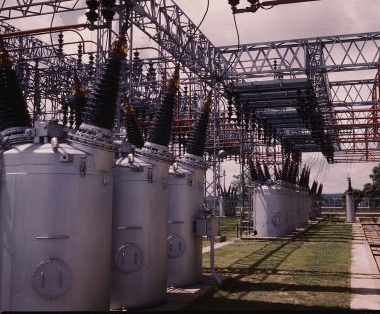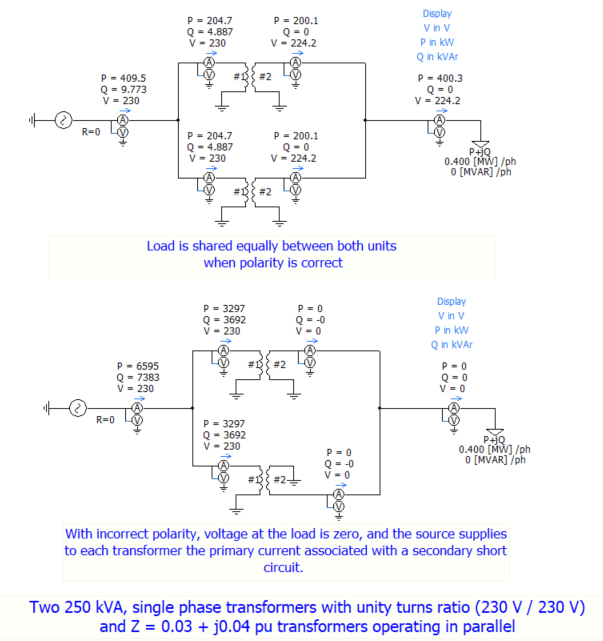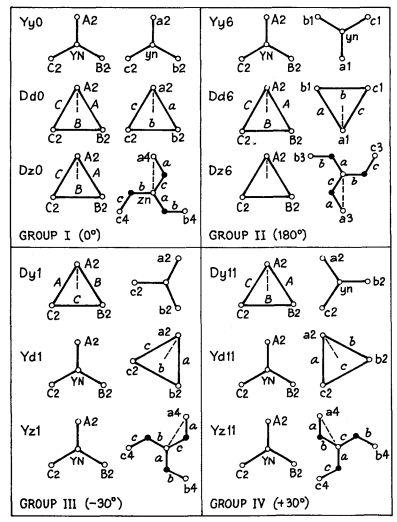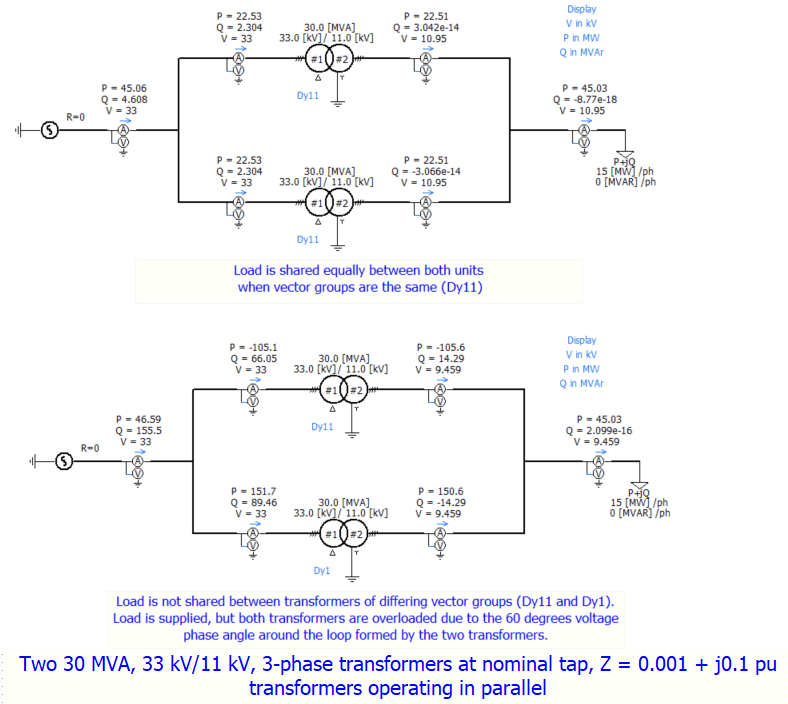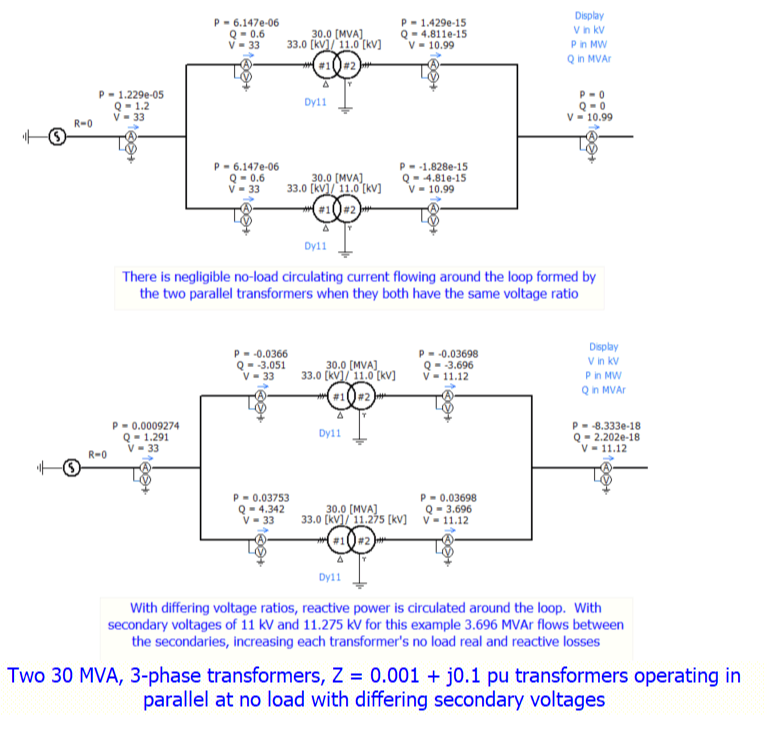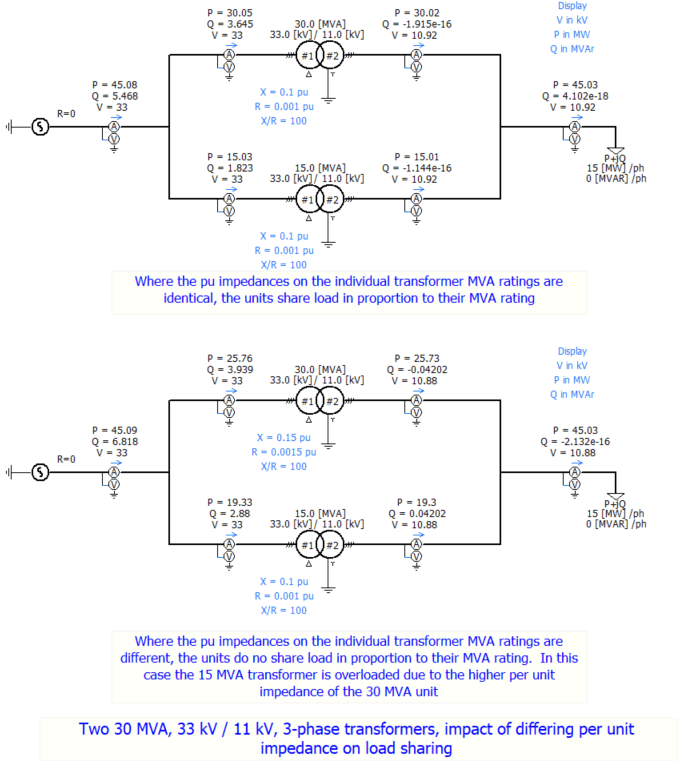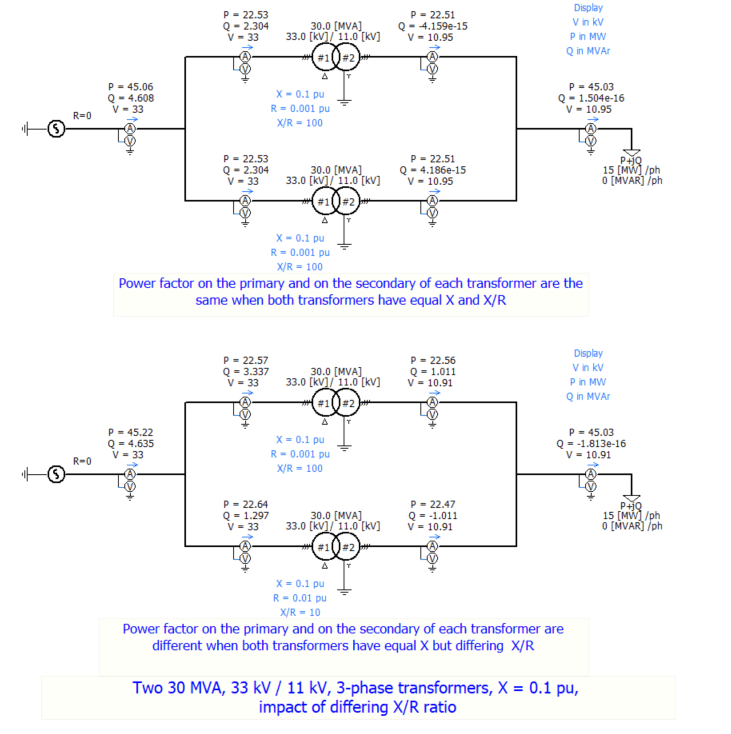Summary
The satisfactory operation of transformers connected on both sides in parallel requires that they must have:
a) the same polarity
b) the same phase sequence (for two three-phase units)
c) zero relative phase displacements (i.e. the same vector group)
Both transformers must be from the same Group (I, II, III or IV), or one transformer from Group III and one from Group VI with the primary and secondary phase sequence of one of the two transformers revered.
Furthermore, it is desirable that they have:
d) a near identity of voltage ratio (tap changers should have tap positions giving voltage ratios as close as possible), and
e) a limited disparity in their per unit impedances (per unit impedance expressed on the respective units own MVA base) and quality (X/R ratio). Plus or minus 10% is normally considered acceptable.
Items (a), (b), and (c) are mandatory for satisfactory operation.
Any departure from equality in items (d) and (e) may lead to an uneconomical division of current, or a circulating current, both of which will lower the efficiency and the decrease the maximum safe load which the parallel units can carry.
In general it is not good practice to operate transformers in parallel under the following conditions.
1. When the division of load is such that, with a total load equal to the combined MVA rating, the load current flowing in any one of then exceeds 110% of its normal full load.
2. When the no-load circulating current in any transformer exceeds 10% of the rated full load value.
3. When the arithmetic sum of the circulating current and load currents is greater than 110% of the normal full-load current.
In the above, circulating current is understood to be the current flowing at no load in the primary and secondary windings excluding the magnetizing current. By load current in meant the currents flowing in the transformers under load, exclusive of exciting and circulating currents.
All of this depends on the loading profile, the duration of peak load, and the thermal dissipation characteristics of the transformer. Nevertheless, these limits, proven by experience, provide valuable guidance when equality in items (d) and (e) is not achieved,
Notes:
1. Here we have considered the conditions necessary for parallel operation of two or more two winding transformers (i.e. transformers with primary and secondary windings) assuming there are no other system constraints to consider. In practice, the increase in total MVA transfer between two busbars by the addition of a parallel transformer will change other system parameters such as fault level and resonant frequency all of which will require analysis when considering the use of additional parallel transformers.
2. The parallel operation of two three winding transformers (i.e. where the transformers have primary, secondary and a tertiary "third" winding) is a more complex case. Furthermore the parallel operation of a two winding transformer with a three winding transformer is in most cases unsatisfactory.
Further information
L.F. Blume, etc all, Transformer Engineering - A treastise on the theory, operation, and application of transformers, 1st Ed, Chapman and Hall, 1938.
Central Station Engineers - Westinghouse Electric Corporation, Electrical Transmission and Distribution Reference Book, 4th Ed, 1964.
M.G. Say, Alternating Current Machines, 4th Ed, Pitman, 1976.
Disclaimer
The information presented in this technical note is for educational purposes only.
K S Power Consulting Ltd. disclaims any responsibility and liability resulting from the use and interpretation of this information.
